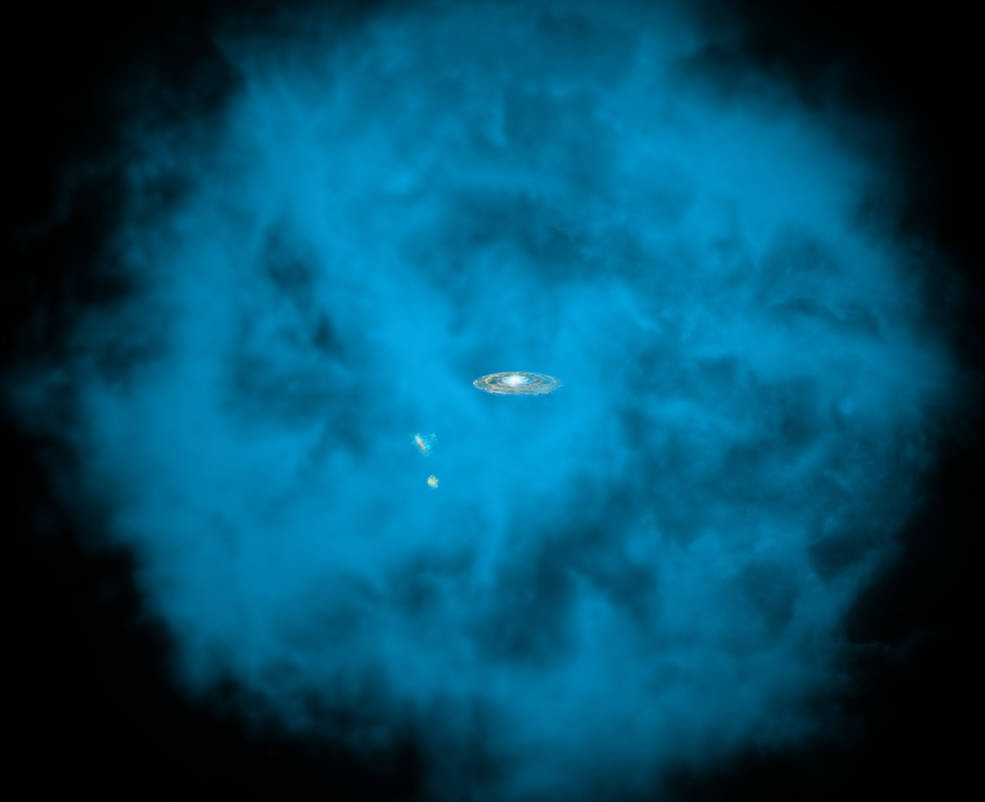
The cloud, called the Milky Way's halo, extends hundreds of thousands of light-years across. Using archived data from the European Space Agency's XMM-Newton telescope, astronomers found the halo is spinning in the same direction as the galaxy and almost as fast.
"This flies in the face of expectations," Edmund Hodges-Kluck, an assistant research scientist at the University of Michigan and lead author on the new study, said in a statement. "People just assumed that the disk of the Milky Way spins while this enormous reservoir of hot gas is stationary — but that is wrong. This hot gas reservoir is rotating as well, just not quite as fast as the disk."
The astronomers measured the halo's direction and speed using observations of shifting wavelengths of light emitted by the hot gas. While the Milky Way's disk, which contains most of the galaxy's stars and planets, rotates at a rate of 540,000 mph (870,000 km/h), the halo spins at 400,000 mph (640,000 km/h), according to the new study published in April in the Astrophysical Journal.
The findings of the new study will help astronomers learn more about the early evolution of the Milky Way galaxy, NASA officials said in the statement.
"The rotation of the hot halo is an incredible clue to how the Milky Way formed," Hodges-Kluck said. "It tells us that this hot atmosphere is the original source of a lot of the matter in the disk."
Previous studies have found that almost all galaxies, including the Milky Way, host less matter than would be expected, and the Milky Way's halo has been identified as a hiding place for some of that "missing" matter.
"Now that we know about the rotation, theorists will begin to use this to learn how our Milky Way galaxy formed — and its eventual destiny," Joel Bregman, a professor of astronomy at the University of Michigan and a co-author on the new work, said in the statement. "We can use this discovery to learn so much more — the rotation of this hot halo will be a big topic of future X-ray spectrographs."



Reader Comments
to our Newsletter